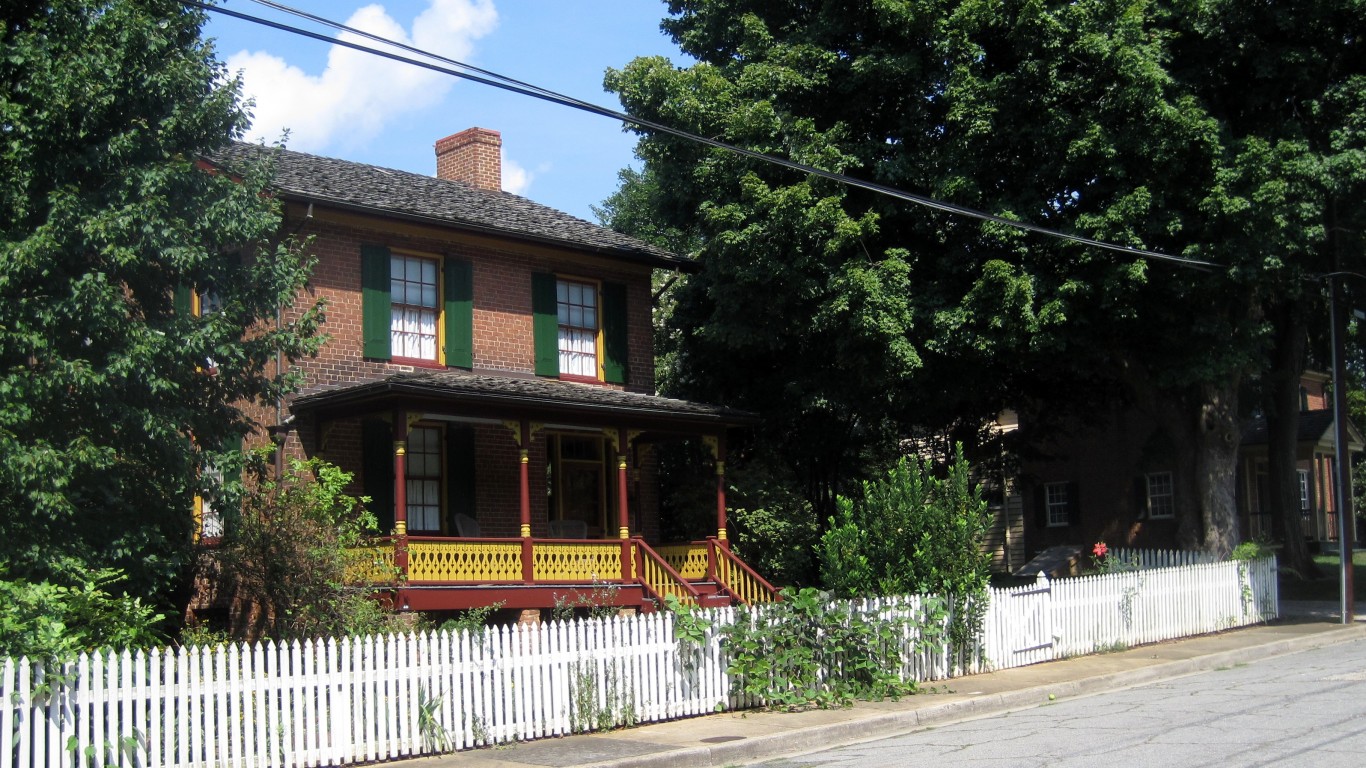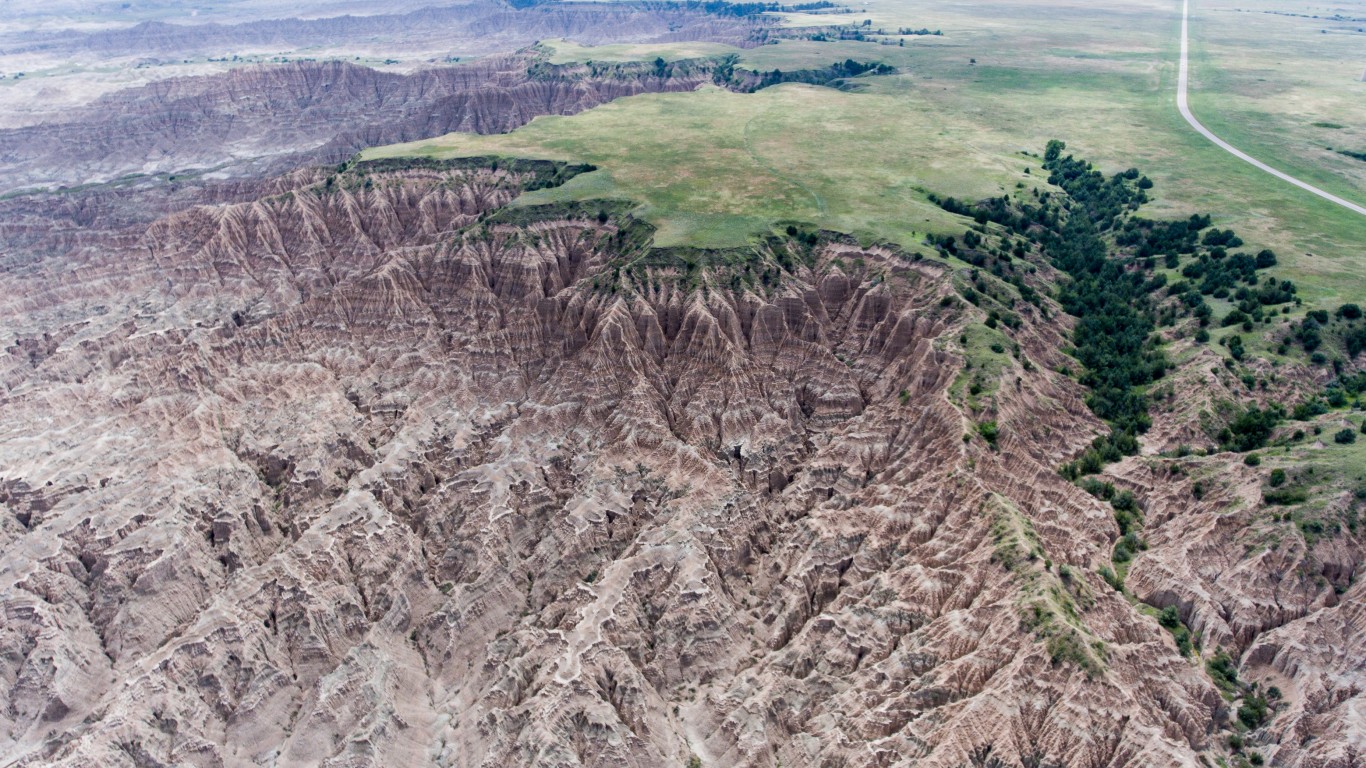
It used to be that the vast majority of children ended up earning more than their parents. Today, however, the situation is considerably different. According to recent research on intergenerational mobility, approximately 90% of those born in the 1940s earned more than their parents, while only about 50% of those born in the 1980s do.
The Equality of Opportunity Project — now part of the Opportunity Insights program at Harvard University — considered average incomes of 26-year-olds raised in the bottom quartile of income in 2,973 U.S. counties and county equivalents (such as parishes, boroughs, census areas, and certain cities). A 26-year-old from this background who earns more than the national average for the bottom quartile is said to have managed upward income mobility.
The researchers found that neighborhood environments have substantial effects on children’s long-term economic outcomes. The probability of earning in adulthood more than $26,090 — the average annual income for the bottom quartile nationally — declines every year of childhood spent in nearly 1,000 low-income counties. To highlight the substantial geographic variation of this pattern, 24/7 Wall St. reviewed the 50 counties and county equivalents where the average income losses are greatest.
Children growing up in counties with less concentrated poverty, less income inequality, better schools, a larger share of two-parent families, and lower crime rates are significantly more likely to surpass their parents later in life. The counties where the American dream is dead include some of the worst counties to live in.
Click here to see the places where the American dream is dead.
Click here to see our detailed findings and methodology.
50. Macon County, Alabama
> Avg. income loss per year of childhood residence: $201
> 2018 population: 19,054
> Household income per capita: $24,917
> Poverty rate: 25.8%
> Nov. 2019 unemployment rate: 3.5%
> Largest city or municipality: Tuskegee
[in-text-ad]

49. Early County, Georgia
> Avg. income loss per year of childhood residence: $201
> 2018 population: 10,348
> Household income per capita: $30,163
> Poverty rate: 28.8%
> Nov. 2019 unemployment rate: 3.4%
> Largest city or municipality: Blakely
48. Fairfield County, South Carolina
> Avg. income loss per year of childhood residence: $202
> 2018 population: 22,712
> Household income per capita: $28,030
> Poverty rate: 22.9%
> Nov. 2019 unemployment rate: 3.3%
> Largest city or municipality: Winnsboro
47. Rolette County, North Dakota
> Avg. income loss per year of childhood residence: $202
> 2018 population: 14,603
> Household income per capita: $22,565
> Poverty rate: 29.3%
> Nov. 2019 unemployment rate: 6.8%
> Largest city or municipality: Belcourt
[in-text-ad-2]

46. Atlantic County, New Jersey
> Avg. income loss per year of childhood residence: $203
> 2018 population: 268,539
> Household income per capita: $38,869
> Poverty rate: 14.3%
> Nov. 2019 unemployment rate: 4.7%
> Largest city or municipality: Atlantic City
45. Hoke County, North Carolina
> Avg. income loss per year of childhood residence: $203
> 2018 population: 53,239
> Household income per capita: $24,807
> Poverty rate: 21.0%
> Nov. 2019 unemployment rate: 4.5%
> Largest city or municipality: Raeford
[in-text-ad]

44. East Baton Rouge Parish, Louisiana
> Avg. income loss per year of childhood residence: $203
> 2018 population: 444,094
> Household income per capita: $35,064
> Poverty rate: 18.3%
> Nov. 2019 unemployment rate: 4.4%
> Largest city or municipality: Baton Rouge
43. Spalding County, Georgia
> Avg. income loss per year of childhood residence: $203
> 2018 population: 64,719
> Household income per capita: $31,155
> Poverty rate: 21.6%
> Nov. 2019 unemployment rate: 3.1%
> Largest city or municipality: Griffin

42. Greene County, Alabama
> Avg. income loss per year of childhood residence: $204
> 2018 population: 8,426
> Household income per capita: $27,644
> Poverty rate: 38.7%
> Nov. 2019 unemployment rate: 4.7%
> Largest city or municipality: Eutaw
[in-text-ad-2]
41. Baldwin County, Georgia
> Avg. income loss per year of childhood residence: $204
> 2018 population: 45,286
> Household income per capita: $26,337
> Poverty rate: 26.2%
> Nov. 2019 unemployment rate: 3.8%
> Largest city or municipality: Milledgeville
40. Guilford County, North Carolina
> Avg. income loss per year of childhood residence: $205
> 2018 population: 523,582
> Household income per capita: $41,339
> Poverty rate: 15.9%
> Nov. 2019 unemployment rate: 3.6%
> Largest city or municipality: Greensboro
[in-text-ad]

39. Terrell County, Georgia
> Avg. income loss per year of childhood residence: $205
> 2018 population: 8,859
> Household income per capita: $26,851
> Poverty rate: 31.9%
> Nov. 2019 unemployment rate: 3.4%
> Largest city or municipality: Dawson
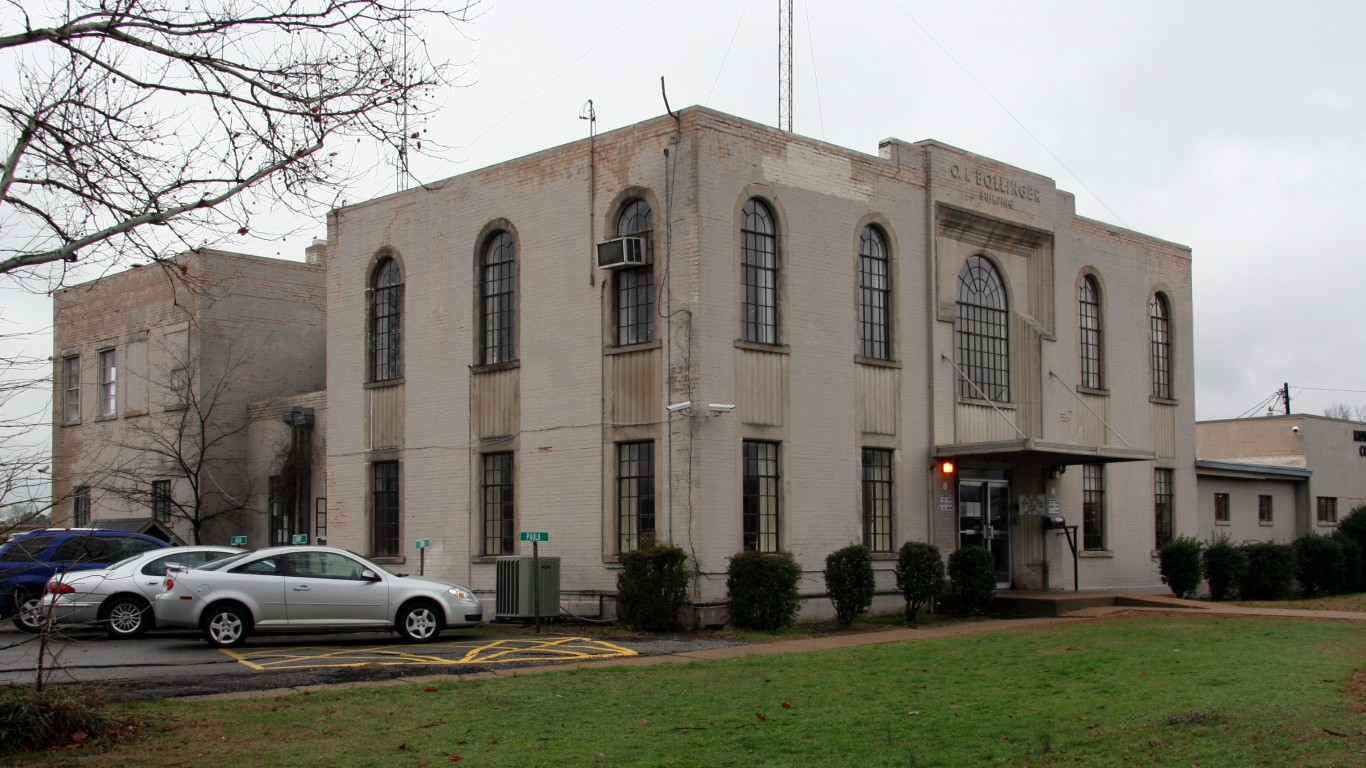
38. Crittenden County, Arkansas
> Avg. income loss per year of childhood residence: $206
> 2018 population: 49,013
> Household income per capita: $27,744
> Poverty rate: 22.2%
> Nov. 2019 unemployment rate: 3.6%
> Largest city or municipality: West Memphis

37. Gadsden County, Florida
> Avg. income loss per year of childhood residence: $208
> 2018 population: 46,017
> Household income per capita: $25,763
> Poverty rate: 24.6%
> Nov. 2019 unemployment rate: 3.6%
> Largest city or municipality: Quincy
[in-text-ad-2]
36. Sumter County, Georgia
> Avg. income loss per year of childhood residence: $208
> 2018 population: 30,352
> Household income per capita: $28,432
> Poverty rate: 27.8%
> Nov. 2019 unemployment rate: 4.0%
> Largest city or municipality: Americus
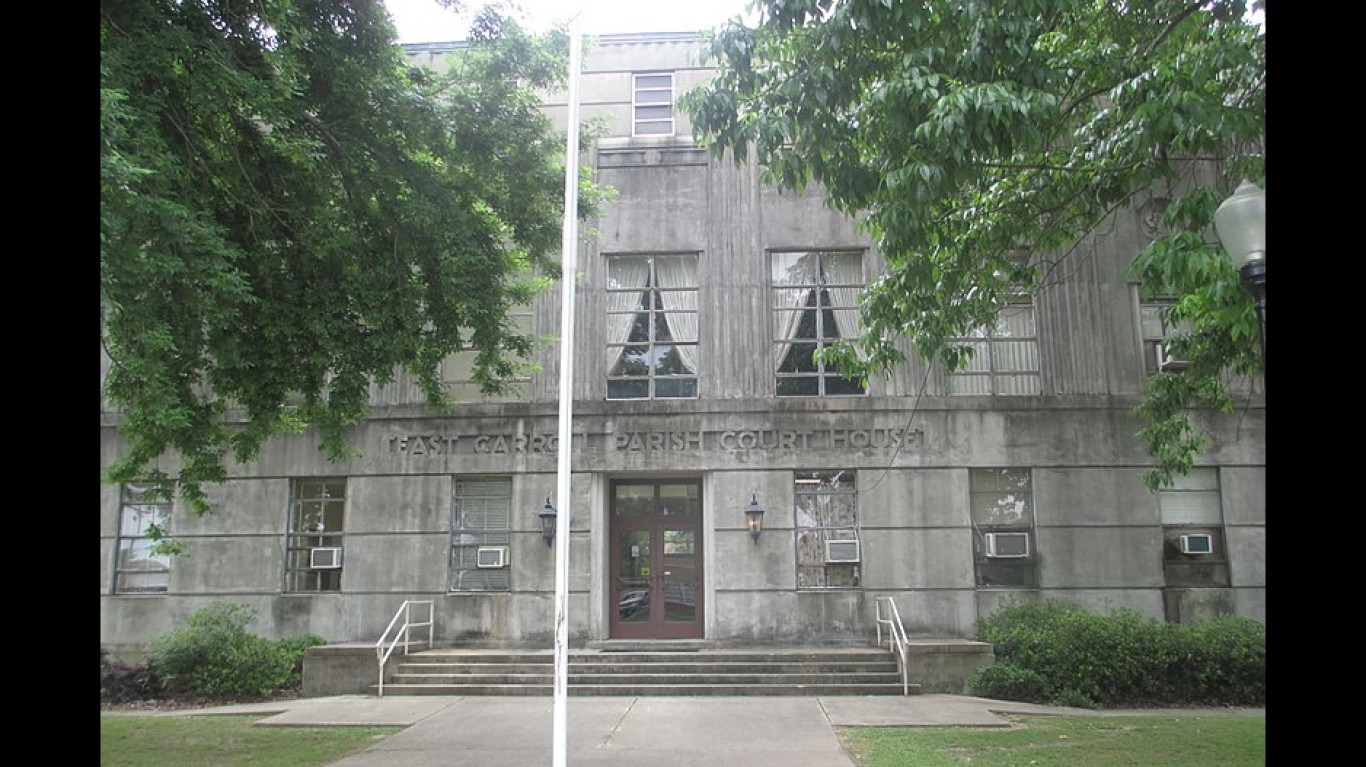
35. East Carroll Parish, Louisiana
> Avg. income loss per year of childhood residence: $210
> 2018 population: 7,225
> Household income per capita: $18,062
> Poverty rate: 48.6%
> Nov. 2019 unemployment rate: 10.7%
> Largest city or municipality: Lake Providence
[in-text-ad]
34. Robeson County, North Carolina
> Avg. income loss per year of childhood residence: $212
> 2018 population: 133,442
> Household income per capita: $24,221
> Poverty rate: 28.1%
> Nov. 2019 unemployment rate: 4.9%
> Largest city or municipality: Lumberton
33. Hancock County, Georgia
> Avg. income loss per year of childhood residence: $214
> 2018 population: 8,535
> Household income per capita: $17,928
> Poverty rate: 24.1%
> Nov. 2019 unemployment rate: 5.3%
> Largest city or municipality: Sparta
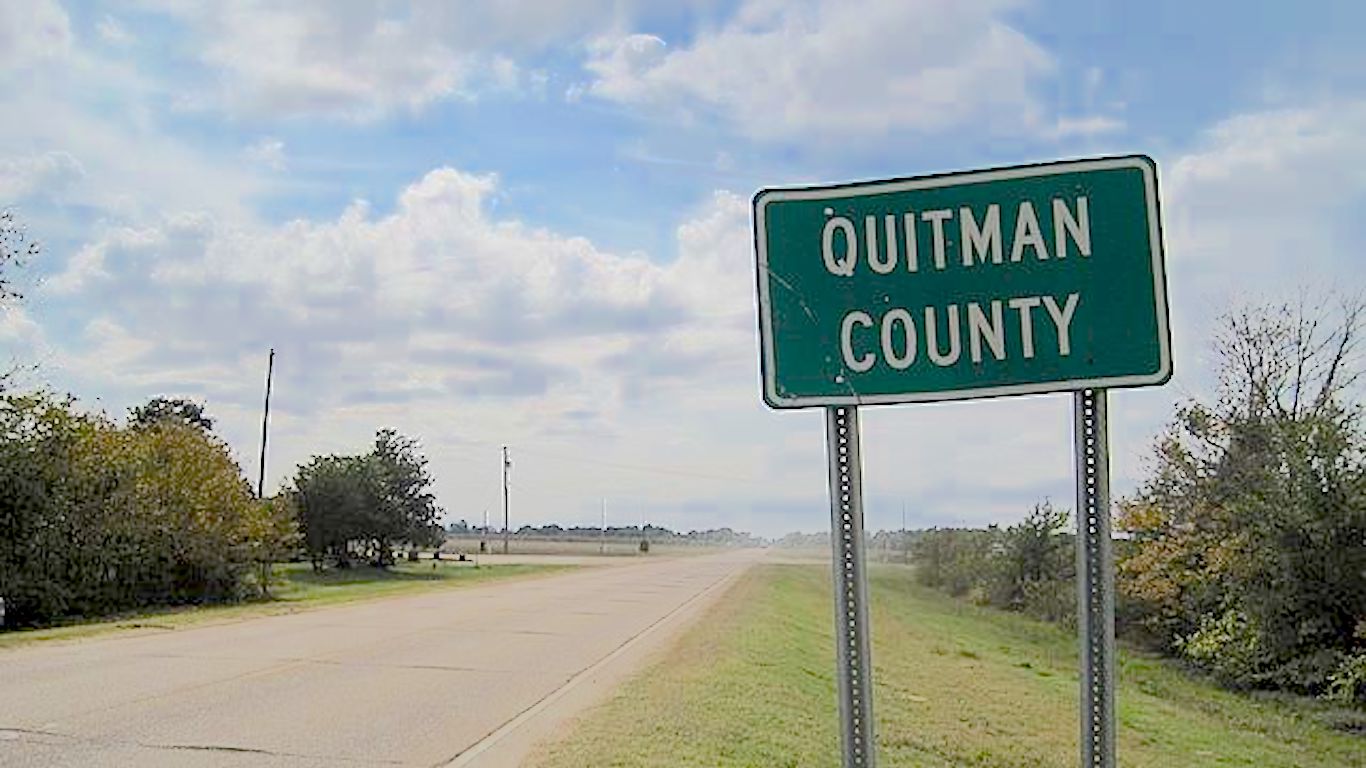
32. Quitman County, Mississippi
> Avg. income loss per year of childhood residence: $214
> 2018 population: 7,372
> Household income per capita: $22,166
> Poverty rate: 35.5%
> Nov. 2019 unemployment rate: 8.1%
> Largest city or municipality: Marks
[in-text-ad-2]

31. Grenada County, Mississippi
> Avg. income loss per year of childhood residence: $215
> 2018 population: 21,278
> Household income per capita: $26,818
> Poverty rate: 24.5%
> Nov. 2019 unemployment rate: 5.0%
> Largest city or municipality: Grenada

30. St. Louis city, Missouri
> Avg. income loss per year of childhood residence: $216
> 2018 population: 311,273
> Household income per capita: $30,072
> Poverty rate: 24.2%
> Nov. 2019 unemployment rate: 3.5%
> Largest city or municipality: St. Louis
[in-text-ad]
29. Genesee County, Michigan
> Avg. income loss per year of childhood residence: $217
> 2018 population: 409,361
> Household income per capita: $38,963
> Poverty rate: 19.8%
> Nov. 2019 unemployment rate: 3.8%
> Largest city or municipality: Flint
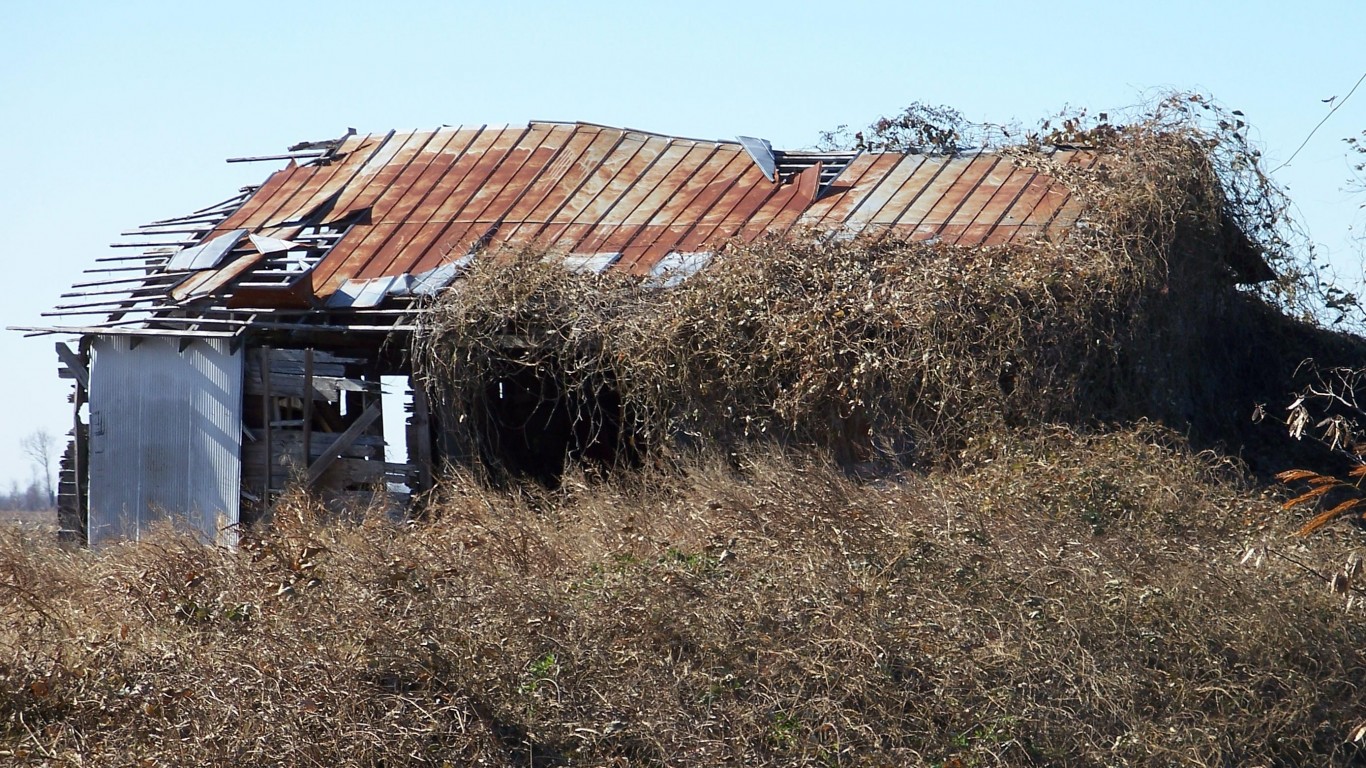
28. Washington County, Mississippi
> Avg. income loss per year of childhood residence: $218
> 2018 population: 47,086
> Household income per capita: $26,530
> Poverty rate: 33.3%
> Nov. 2019 unemployment rate: 8.0%
> Largest city or municipality: Greenville
27. Scotland County, North Carolina
> Avg. income loss per year of childhood residence: $219
> 2018 population: 35,262
> Household income per capita: $29,071
> Poverty rate: 27.7%
> Nov. 2019 unemployment rate: 6.1%
> Largest city or municipality: Laurinburg
[in-text-ad-2]

26. Oktibbeha County, Mississippi
> Avg. income loss per year of childhood residence: $219
> 2018 population: 49,481
> Household income per capita: $24,040
> Poverty rate: 30.0%
> Nov. 2019 unemployment rate: 5.7%
> Largest city or municipality: Starkville
25. Bolivar County, Mississippi
> Avg. income loss per year of childhood residence: $223
> 2018 population: 32,592
> Household income per capita: $22,311
> Poverty rate: 34.6%
> Nov. 2019 unemployment rate: 7.3%
> Largest city or municipality: Cleveland
[in-text-ad]
24. Sunflower County, Mississippi
> Avg. income loss per year of childhood residence: $228
> 2018 population: 26,532
> Household income per capita: $18,895
> Poverty rate: 31.5%
> Nov. 2019 unemployment rate: 9.7%
> Largest city or municipality: Indianola

23. Allendale County, South Carolina
> Avg. income loss per year of childhood residence: $229
> 2018 population: 9,214
> Household income per capita: $21,262
> Poverty rate: 26.8%
> Nov. 2019 unemployment rate: 3.9%
> Largest city or municipality: Allendale
22. Tallahatchie County, Mississippi
> Avg. income loss per year of childhood residence: $230
> 2018 population: 14,361
> Household income per capita: $21,421
> Poverty rate: 30.6%
> Nov. 2019 unemployment rate: 5.5%
> Largest city or municipality: Charleston
[in-text-ad-2]

21. Nome Census Area, Alaska
> Avg. income loss per year of childhood residence: $230
> 2018 population: 9,925
> Household income per capita: $29,589
> Poverty rate: 23.1%
> Nov. 2019 unemployment rate: 9.5%
> Largest city or municipality: Nome
20. Big Horn County, Montana
> Avg. income loss per year of childhood residence: $230
> 2018 population: 13,376
> Household income per capita: $20,646
> Poverty rate: 26.2%
> Nov. 2019 unemployment rate: 6.7%
> Largest city or municipality: Hardin
[in-text-ad]

19. Roanoke City, Virginia
> Avg. income loss per year of childhood residence: $233
> 2018 population: 99,621
> Household income per capita: $34,745
> Poverty rate: 20.5%
> Nov. 2019 unemployment rate: 2.7%
> Largest city or municipality: Roanoke

18. Dewey County, South Dakota
> Avg. income loss per year of childhood residence: $235
> 2018 population: 5,779
> Household income per capita: $19,529
> Poverty rate: 30.2%
> Nov. 2019 unemployment rate: 7.5%
> Largest city or municipality: North Eagle Butte
17. Hinds County, Mississippi
> Avg. income loss per year of childhood residence: $235
> 2018 population: 241,774
> Household income per capita: $32,627
> Poverty rate: 22.2%
> Nov. 2019 unemployment rate: 5.2%
> Largest city or municipality: Jackson
[in-text-ad-2]
16. Leflore County, Mississippi
> Avg. income loss per year of childhood residence: $236
> 2018 population: 29,804
> Household income per capita: $23,465
> Poverty rate: 39.2%
> Nov. 2019 unemployment rate: 7.3%
> Largest city or municipality: Greenwood

15. Richmond City, Virginia
> Avg. income loss per year of childhood residence: $240
> 2018 population: 223,787
> Household income per capita: $35,536
> Poverty rate: 24.5%
> Nov. 2019 unemployment rate: 2.9%
> Largest city or municipality: Richmond
[in-text-ad]

14. Clarke County, Georgia
> Avg. income loss per year of childhood residence: $242
> 2018 population: 124,602
> Household income per capita: $26,220
> Poverty rate: 31.3%
> Nov. 2019 unemployment rate: 2.6%
> Largest city or municipality: Athens-Clarke County
13. Claiborne County, Mississippi
> Avg. income loss per year of childhood residence: $242
> 2018 population: 9,120
> Household income per capita: $19,485
> Poverty rate: 44.0%
> Nov. 2019 unemployment rate: 10.6%
> Largest city or municipality: Port Gibson
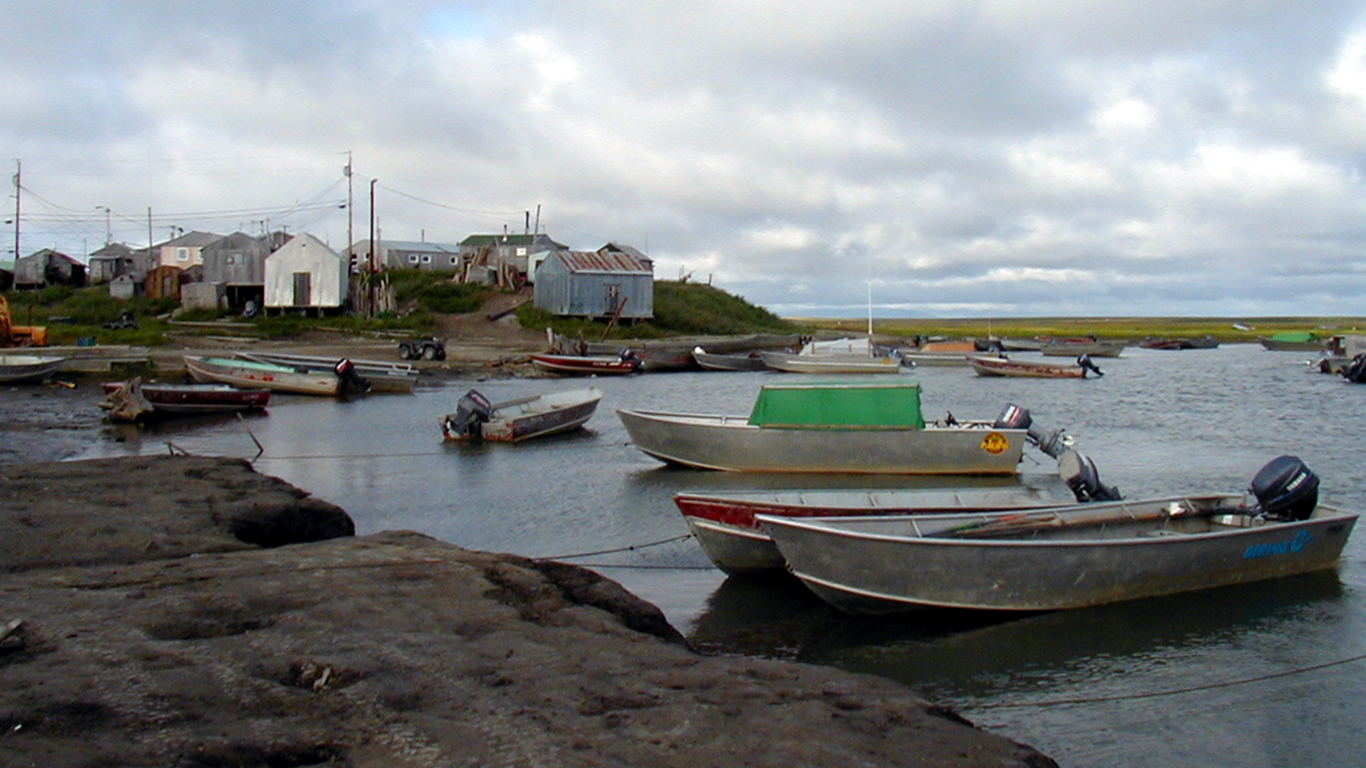
12. Kusilvak Census Area, Alaska
> Avg. income loss per year of childhood residence: $245
> 2018 population: 8,198
> Household income per capita: $19,557
> Poverty rate: 40.5%
> Nov. 2019 unemployment rate: N/A
> Largest city or municipality: N/A
[in-text-ad-2]
11. McKinley County, New Mexico
> Avg. income loss per year of childhood residence: $248
> 2018 population: 72,849
> Household income per capita: $19,744
> Poverty rate: 36.0%
> Nov. 2019 unemployment rate: 6.6%
> Largest city or municipality: Gallup
10. Tunica County, Mississippi
> Avg. income loss per year of childhood residence: $249
> 2018 population: 10,170
> Household income per capita: $22,618
> Poverty rate: 21.9%
> Nov. 2019 unemployment rate: 5.8%
> Largest city or municipality: Tunica
[in-text-ad]

9. Humphreys County, Mississippi
> Avg. income loss per year of childhood residence: $254
> 2018 population: 8,539
> Household income per capita: $21,846
> Poverty rate: 38.1%
> Nov. 2019 unemployment rate: 9.8%
> Largest city or municipality: Belzoni

8. Glacier County, Montana
> Avg. income loss per year of childhood residence: $263
> 2018 population: 13,699
> Household income per capita: $23,252
> Poverty rate: 33.3%
> Nov. 2019 unemployment rate: 7.3%
> Largest city or municipality: Cut Bank

7. Coahoma County, Mississippi
> Avg. income loss per year of childhood residence: $273
> 2018 population: 23,802
> Household income per capita: $25,675
> Poverty rate: 34.0%
> Nov. 2019 unemployment rate: 7.1%
> Largest city or municipality: Clarksdale
[in-text-ad-2]

6. Orleans Parish, Louisiana
> Avg. income loss per year of childhood residence: $276
> 2018 population: 389,648
> Household income per capita: $31,246
> Poverty rate: 24.6%
> Nov. 2019 unemployment rate: 4.8%
> Largest city or municipality: New Orleans
5. Forsyth County, North Carolina
> Avg. income loss per year of childhood residence: $286
> 2018 population: 371,573
> Household income per capita: $41,647
> Poverty rate: 17.6%
> Nov. 2019 unemployment rate: 3.3%
> Largest city or municipality: Winston-Salem
[in-text-ad]
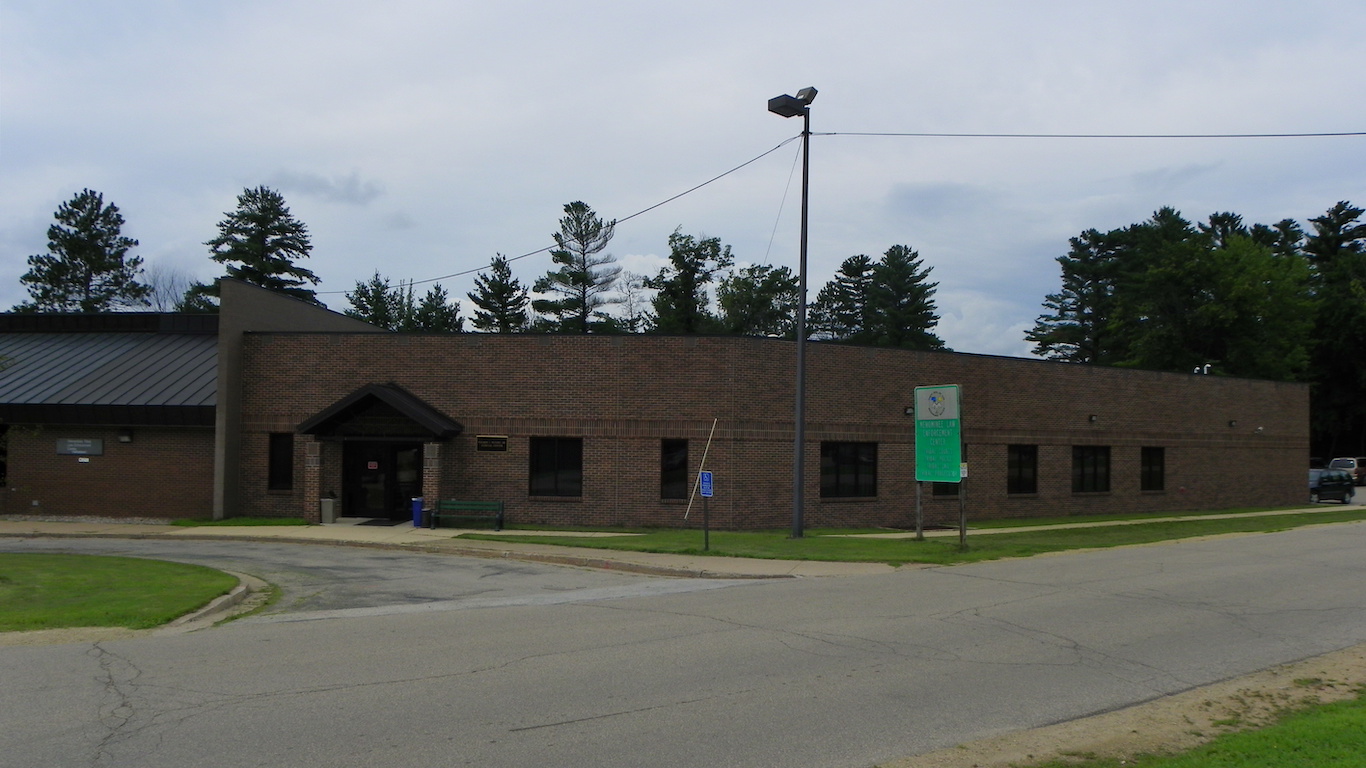
4. Menominee County, Wisconsin
> Avg. income loss per year of childhood residence: $313
> 2018 population: 4,579
> Household income per capita: $21,942
> Poverty rate: 32.6%
> Nov. 2019 unemployment rate: 7.3%
> Largest city or municipality: Keshena
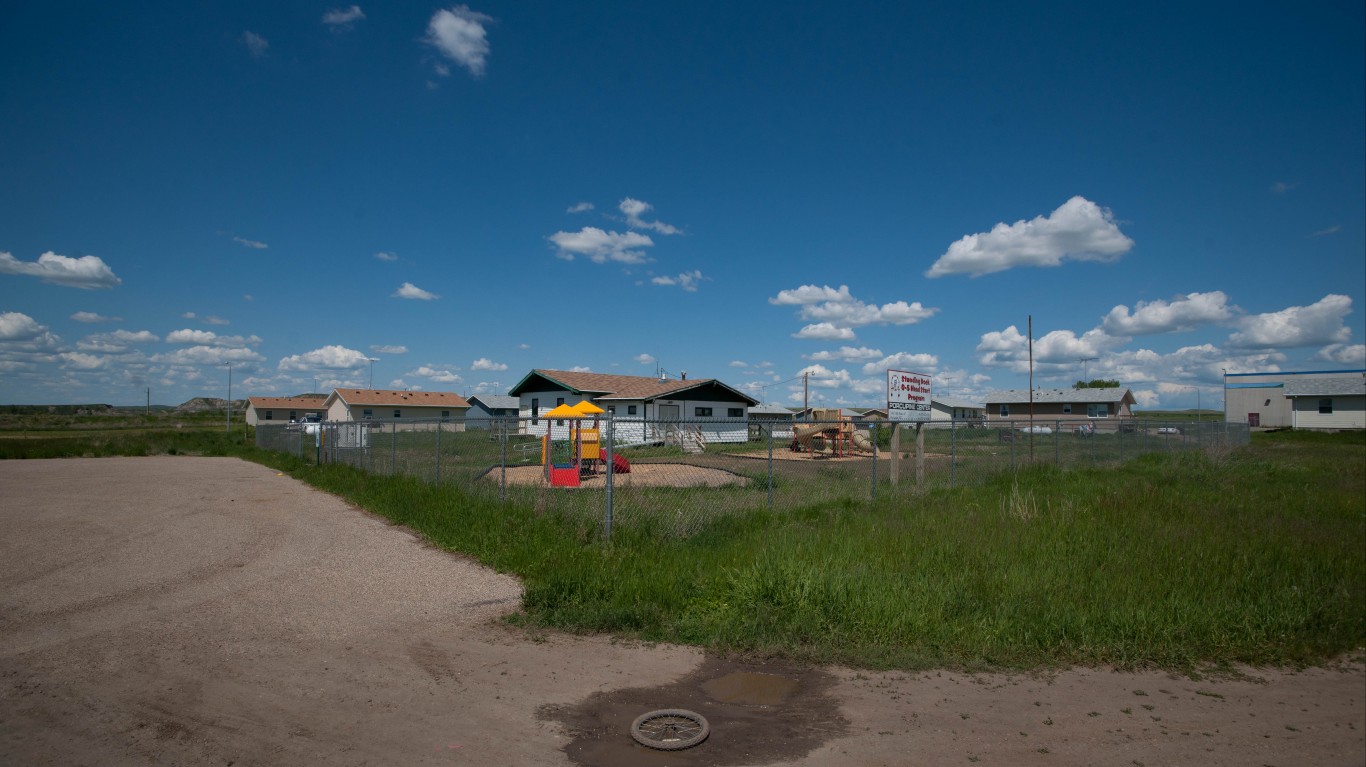
3. Sioux County, North Dakota
> Avg. income loss per year of childhood residence: $318
> 2018 population: 4,413
> Household income per capita: $16,103
> Poverty rate: 36.5%
> Nov. 2019 unemployment rate: 3.2%
> Largest city or municipality: Cannon Ball
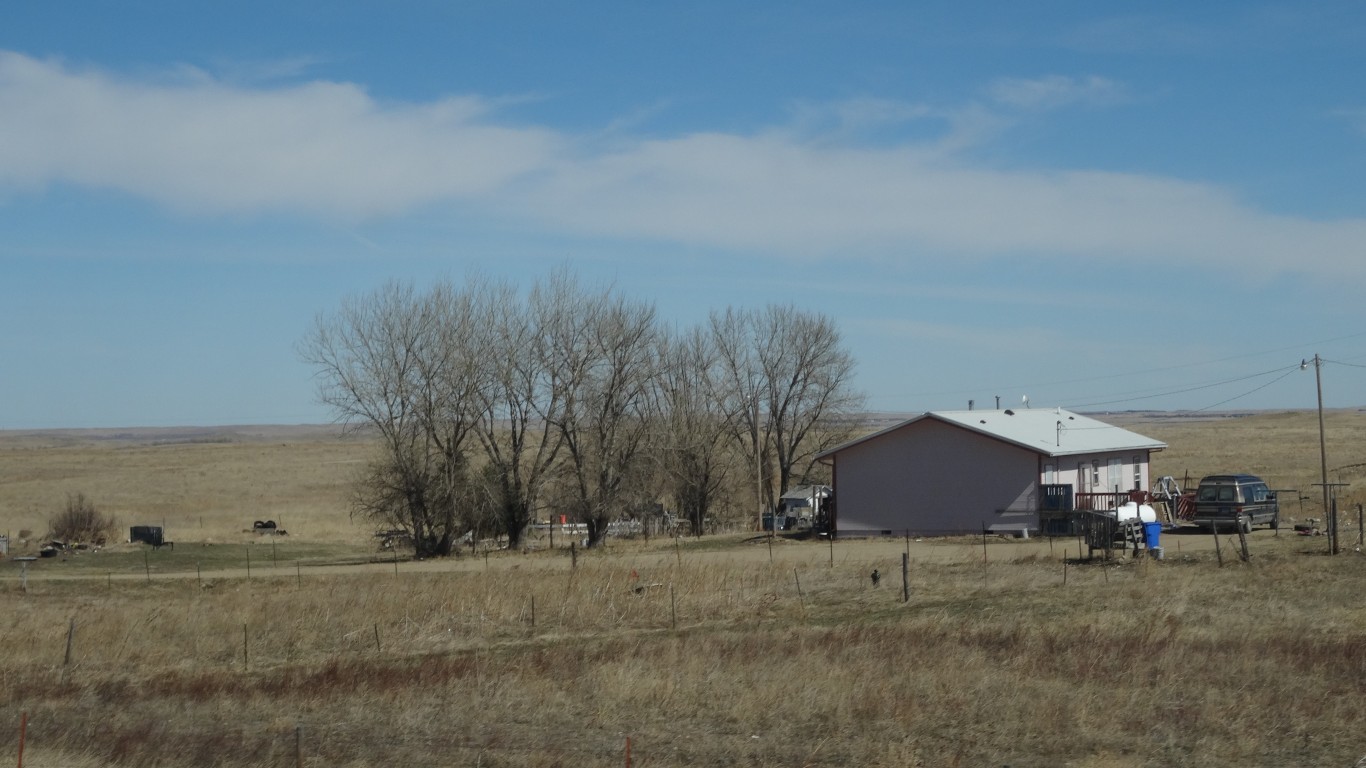
2. Todd County, South Dakota
> Avg. income loss per year of childhood residence: $441
> 2018 population: 10,146
> Household income per capita: $16,641
> Poverty rate: 55.1%
> Nov. 2019 unemployment rate: 6.5%
> Largest city or municipality: Rosebud
[in-text-ad-2]
1. Oglala Lakota County, South Dakota
> Avg. income loss per year of childhood residence: $484
> 2018 population: 14,335
> Household income per capita: $13,647
> Poverty rate: 49.3%
> Nov. 2019 unemployment rate: N/A
> Largest city or municipality: N/A
Methodology:
To identify the counties where the American dream is dead, 24/7 Wall St. reviewed the effect on household income earned in adulthood for every year of childhood spent in 2,973 U.S. counties and county equivalents from data published by The Equality of Opportunity Project. Researchers at the organization used data from 1996-2012 tax returns to study the long-term economic outcomes of approximately 50 million children.
This annual effect on adult earnings is called the exposure effect and is measured as the percentage gained or lost from the average annual household income — $26,090 — for a 26-year-old in the bottom quartile of U.S. earners. To find the average income lost per county per year, we multiplied the exposure effect by this income threshold.
The Equality of Opportunity Project publishes economic mobility-related research and data files for public use. It receives funding from Stanford University, Harvard University, the National Science Foundation, and several charitable groups, including the Robert Wood Johnson Foundation.
Population figures and poverty rates for each county came from the U.S. Census Bureau’s 2018 American Community Survey and are 5-year averages. November 2019 unemployment rates are not seasonally adjusted from the U.S. Bureau of Labor Statistics.
Credit card companies are handing out rewards and benefits to win the best customers. A good cash back card can be worth thousands of dollars a year in free money, not to mention other perks like travel, insurance, and access to fancy lounges. See our top picks for the best credit cards today. You won’t want to miss some of these offers.
Flywheel Publishing has partnered with CardRatings for our coverage of credit card products. Flywheel Publishing and CardRatings may receive a commission from card issuers.
Thank you for reading! Have some feedback for us?
Contact the 24/7 Wall St. editorial team.
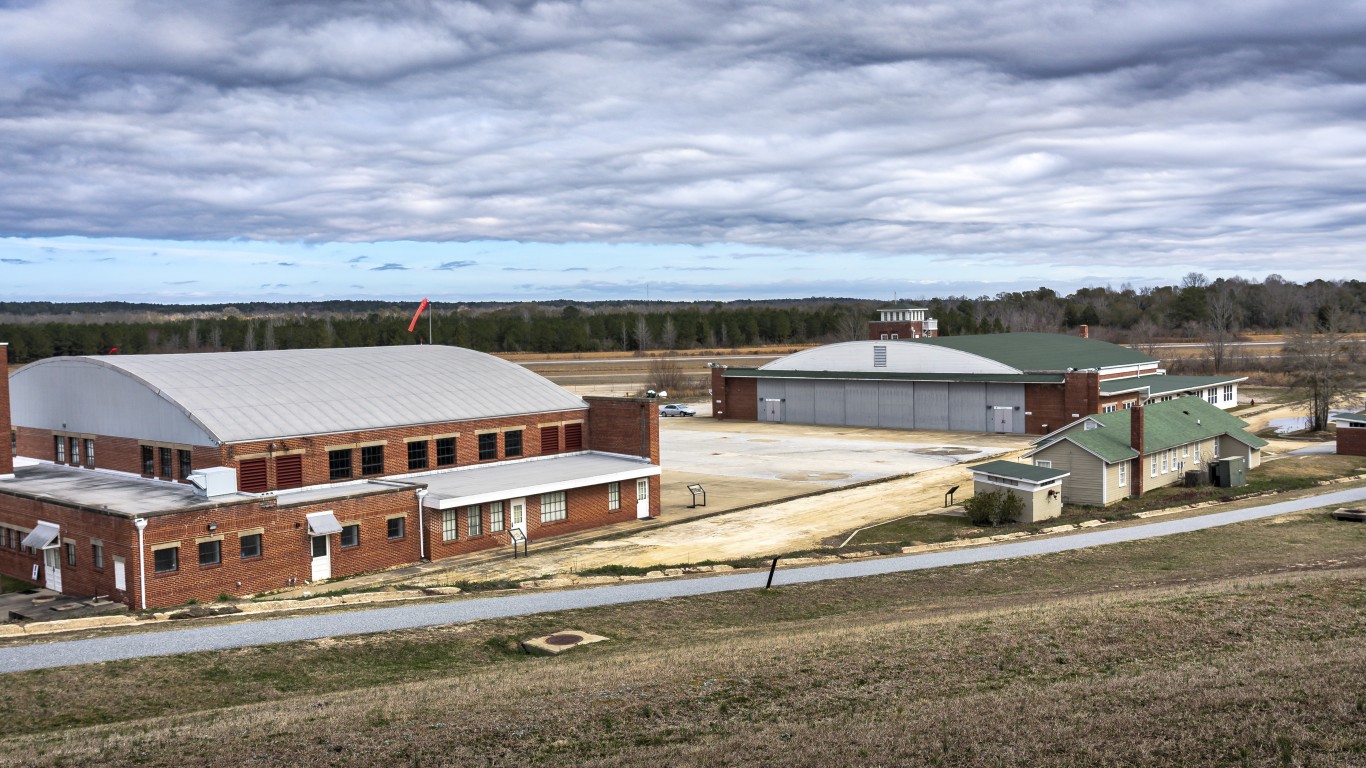
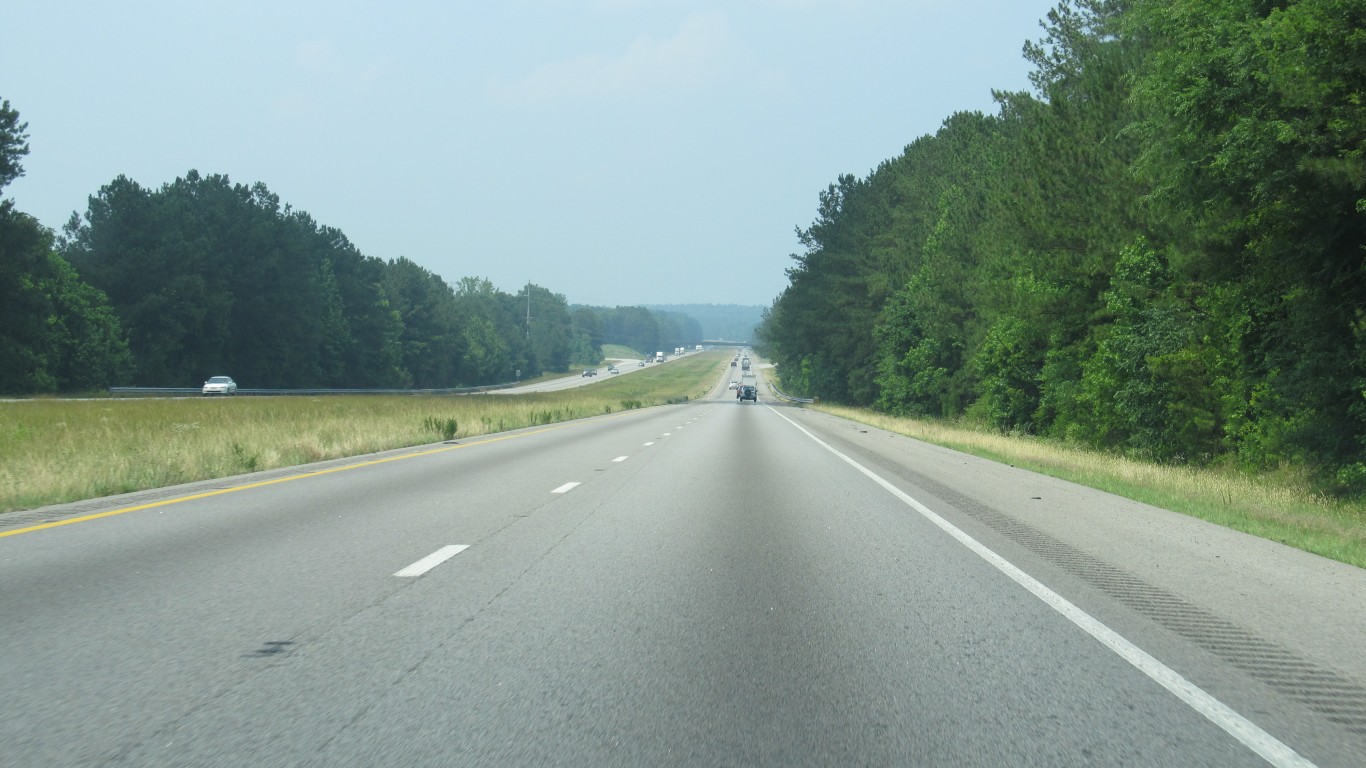
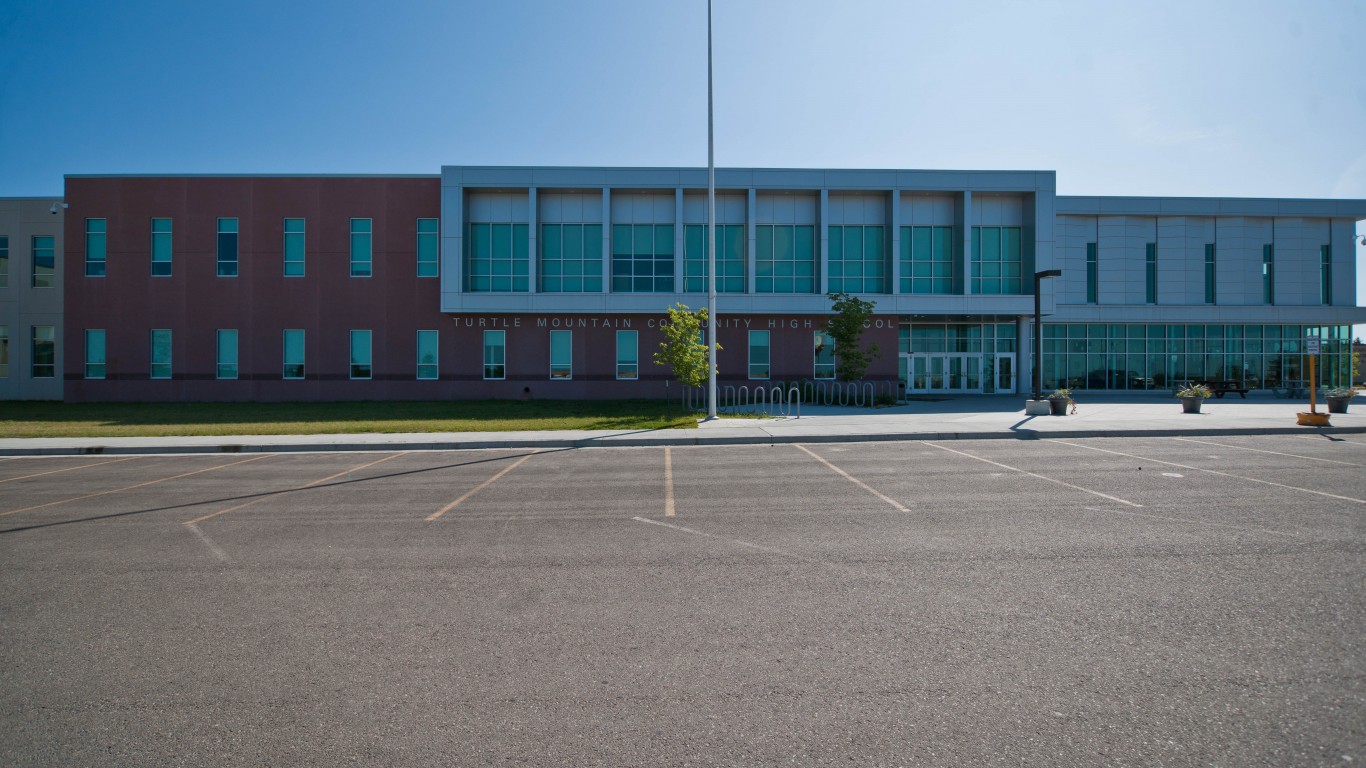

 24/7 Wall St.
24/7 Wall St.
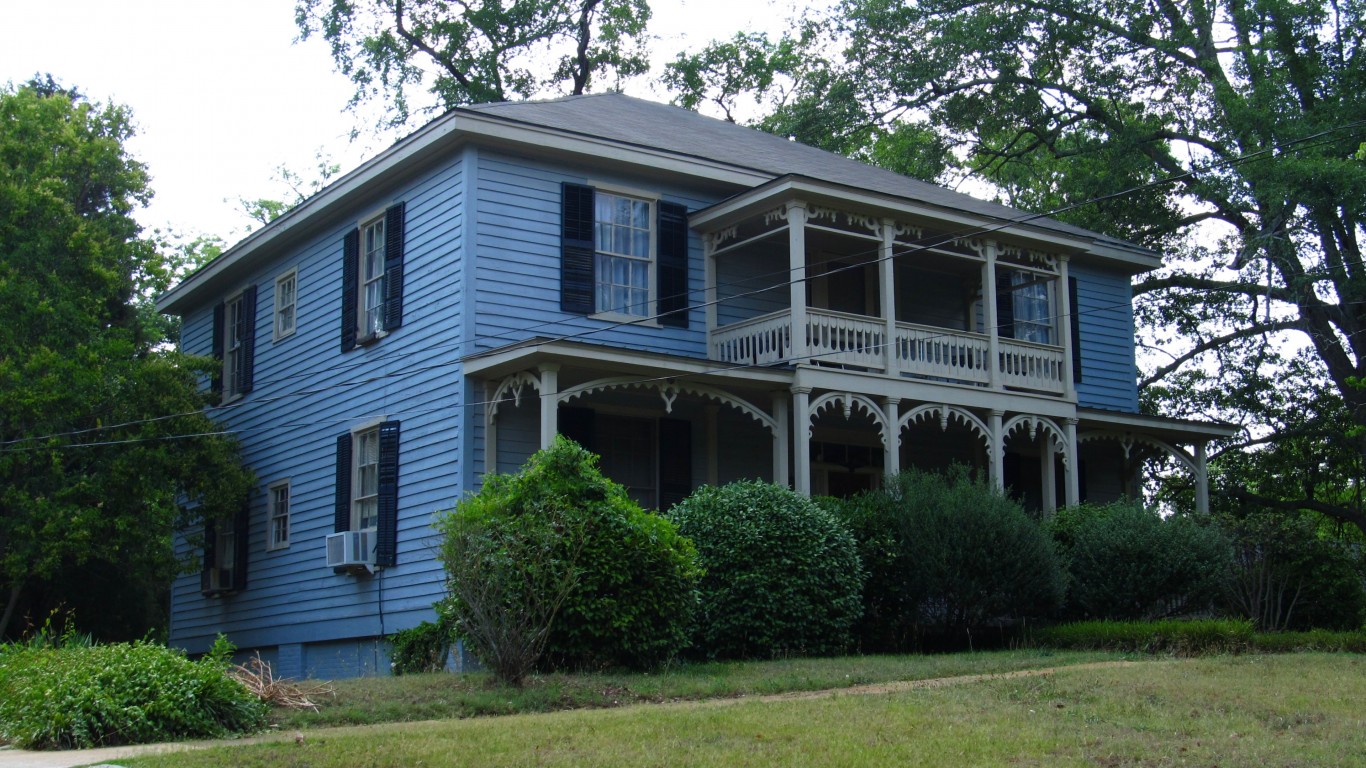



 24/7 Wall St.
24/7 Wall St.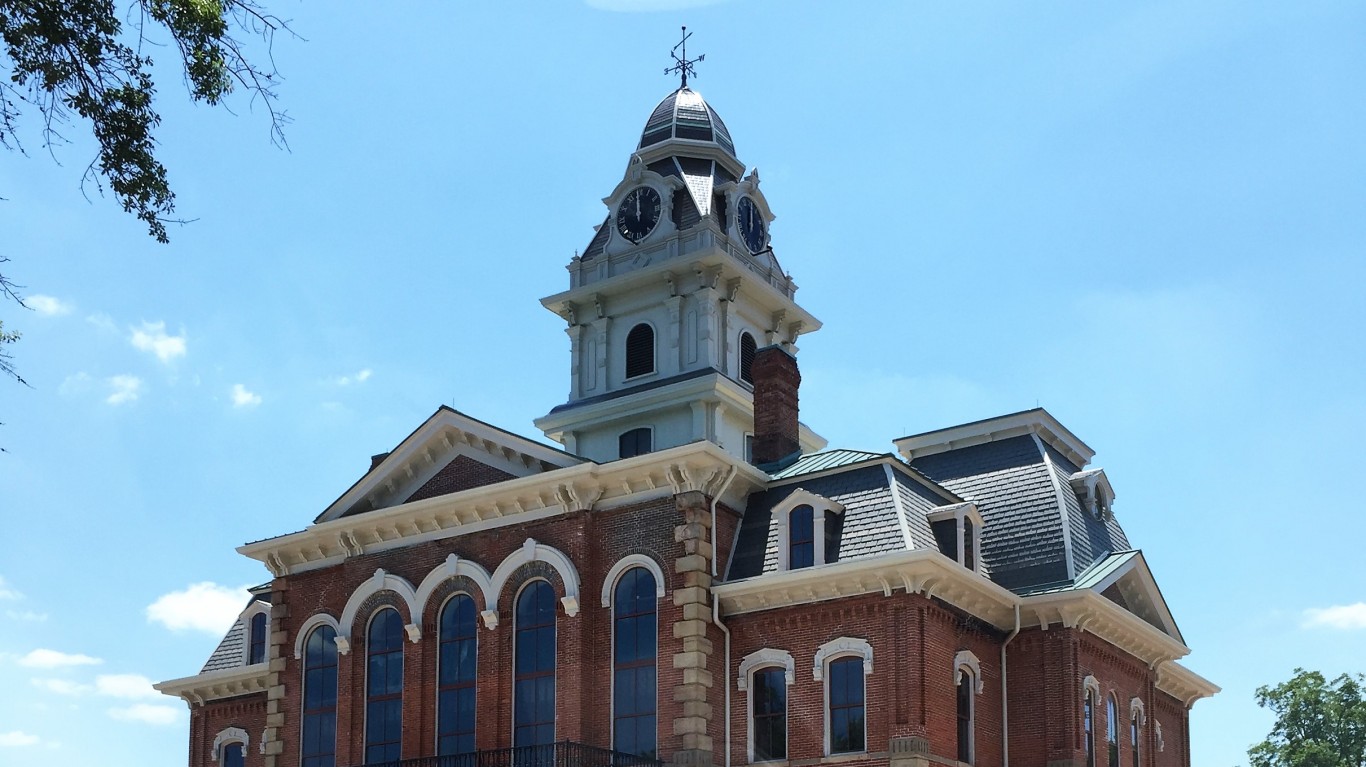

 24/7 Wall St.
24/7 Wall St.
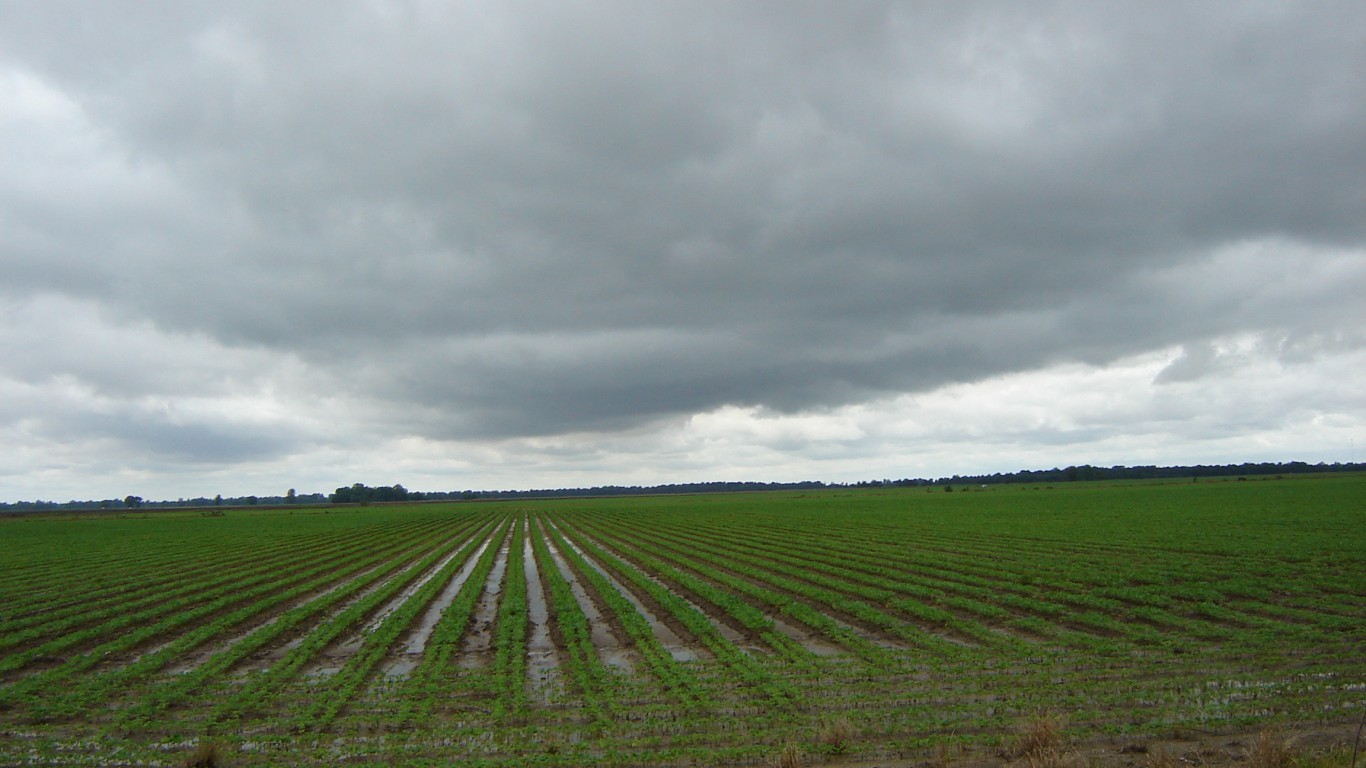

 24/7 Wall St.
24/7 Wall St.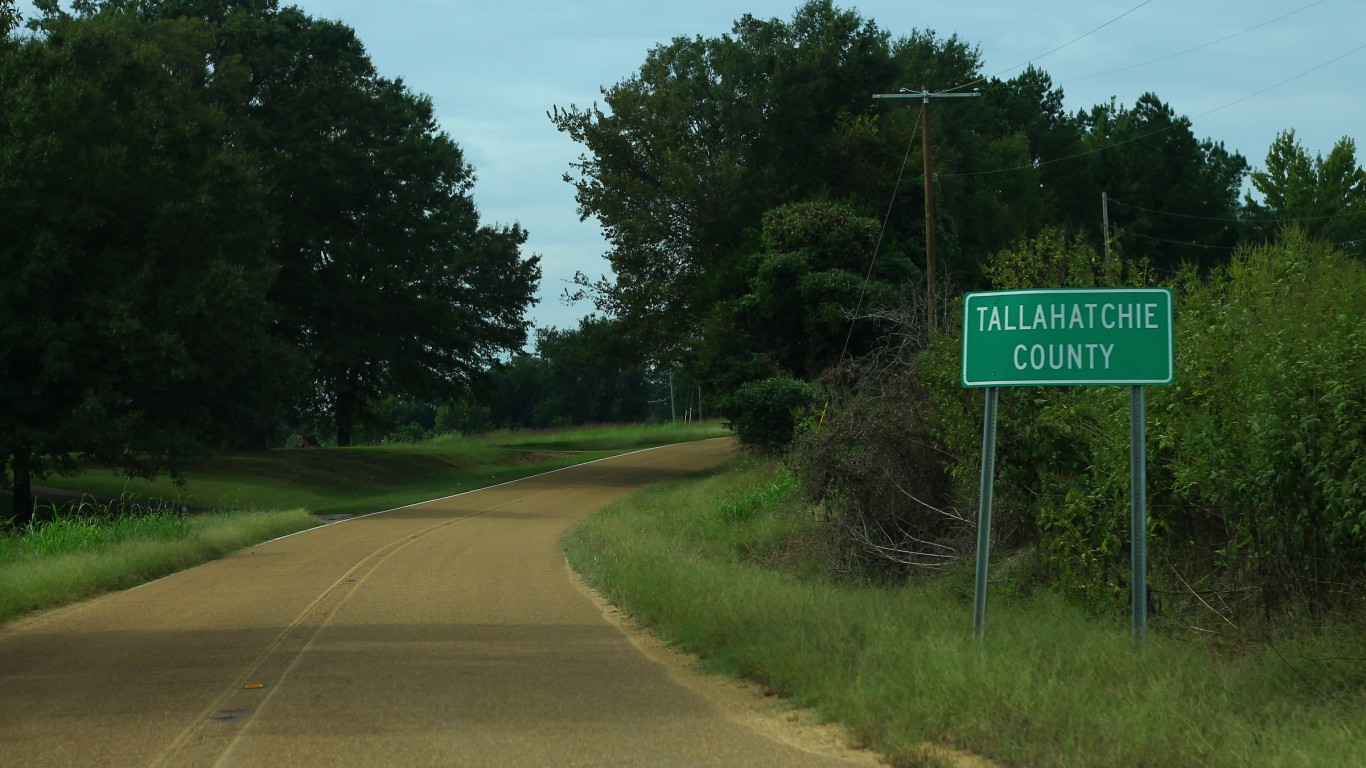
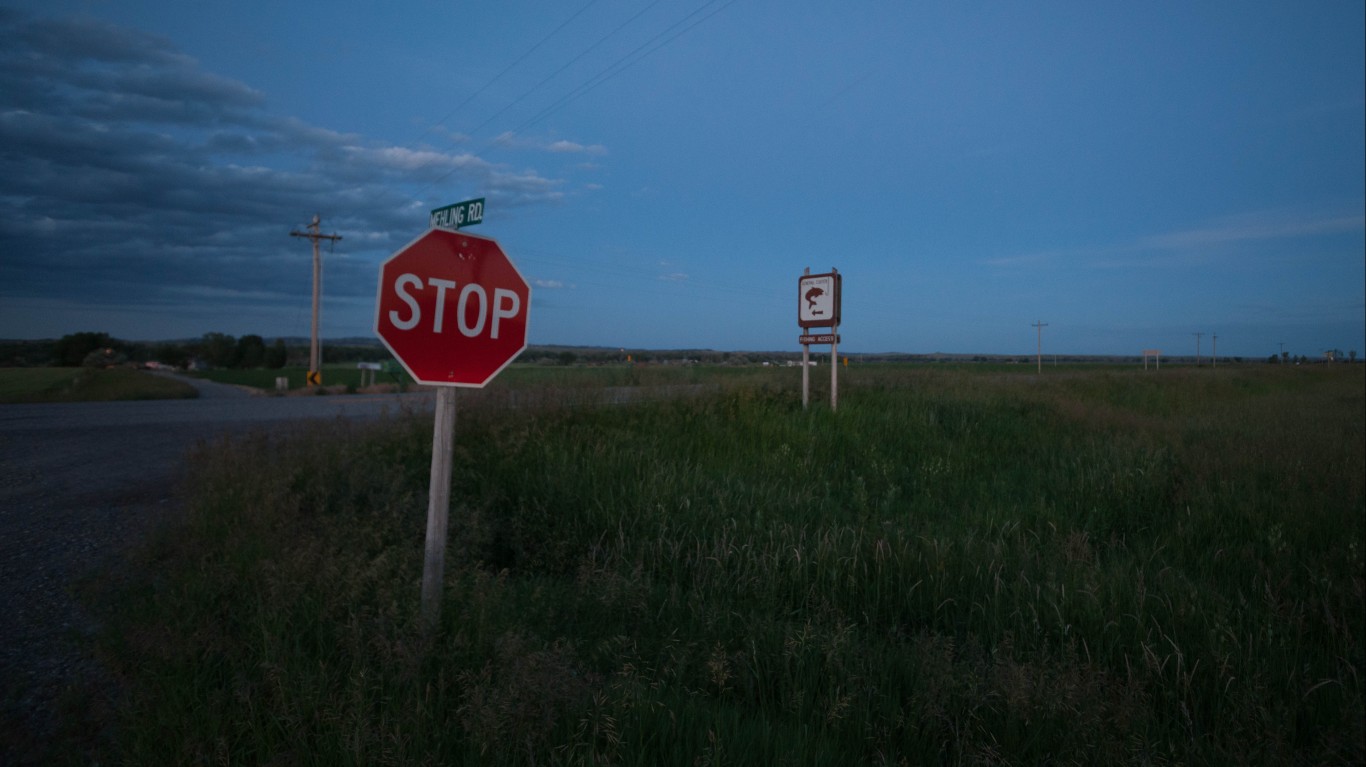


 24/7 Wall St.
24/7 Wall St.


